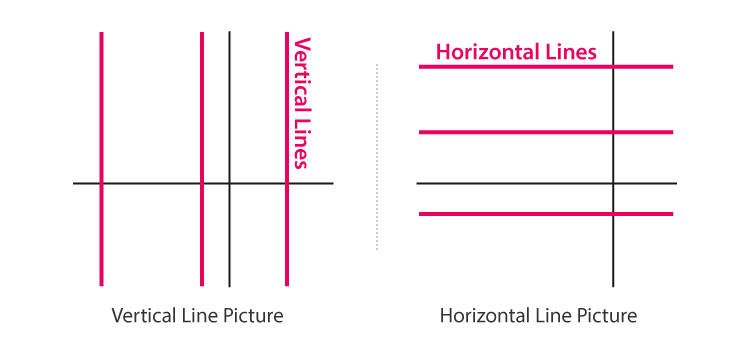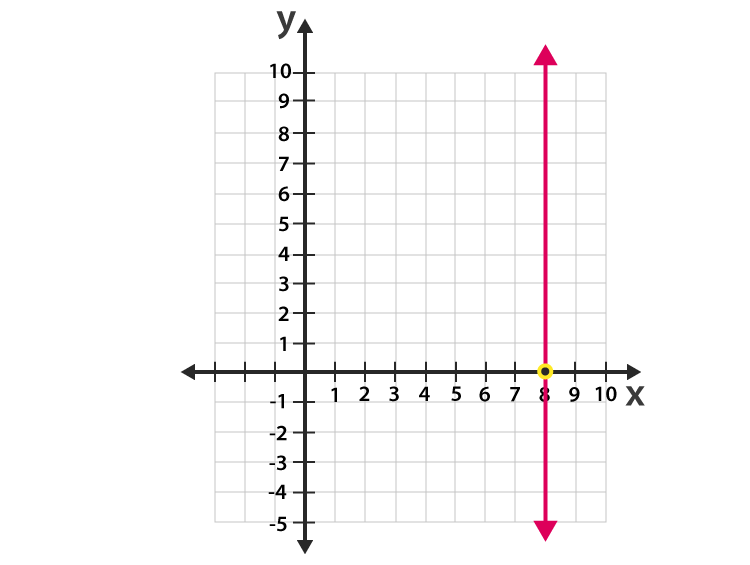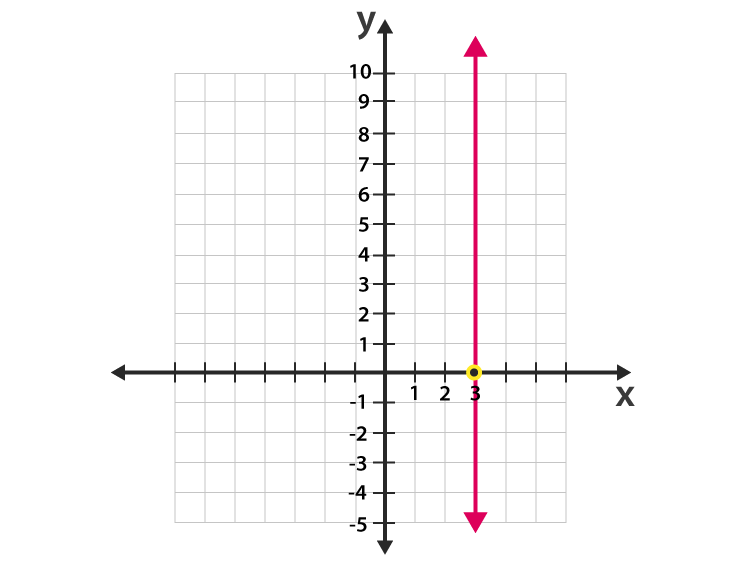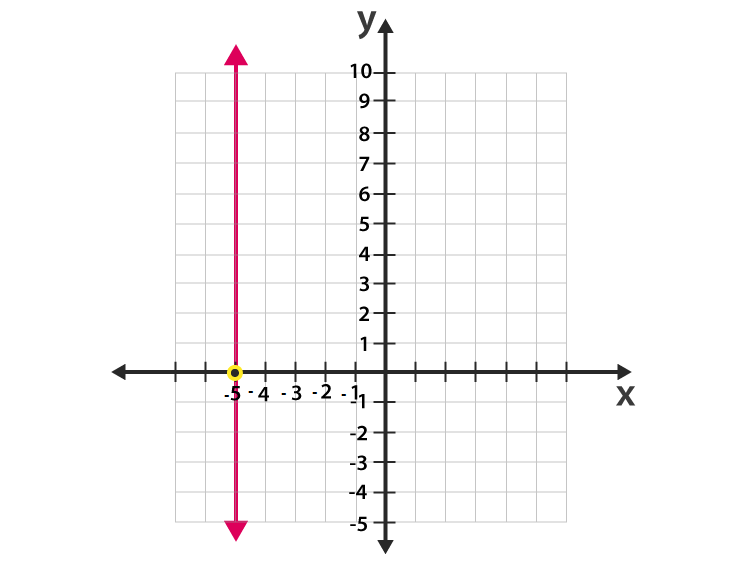Vertical Line
In a coordinate plane, a line parallel to the Y-axis is called Vertical Line. It is a straight line which goes from top to bottom and bottom to top. Any point in this line will have the same value for the x-coordinate. For example, (2,0), (3,0) (-4,0), etc. are the points of vertical lines. Similarly, the line which goes from left to right and is parallel to the x-axis is called a horizontal line.
The vertical lines have no slope. It goes parallelly along with y-axis and hence the slope is not defined. Therefore, the equation of the vertical line which crosses the x-axis at any point say ‘a’, is given by:
x = a
where x is the coordinate of a point on the line and ‘a’ is the point where the lines cross the x-intercept. See the below image to understand the difference between vertical and horizontal lines.

In the above figure, we can see, the left side shows the vertical lines in a coordinate plane whereas the right side shows the horizontal lines parallel to the x-axis.
Let us learn more about Vertical Lines.
Properties of Vertical Lines
- The equation of a vertical line in the graph, which is parallel to y-axis is x = a.
- The slope of a vertical line is infinity or undefined as it has no y-intercept and the denominator in the slope formula is zero.
- To check whether the relation is a function in maths, we use a vertical line. It would be a function if all vertical lines intersect it minimum once. This is also called a vertical line test. A graph will be considered as a function if it has only one output y for each input x. Therefore, a vertical line cannot be a function.
Solved Examples
Question 1: Plot the graph for the following:
- X = 8
x=8 is a vertical line, that passes through x-axis, at a distance of 8 units on the right of the origin and is parallel to y-axis.

- X = – 4
x=-4 is a vertical line, that passes through x-axis, at a distance of 4 units on the left side of the origin and is parallel to y-axis.

- X = 3
x=3 is a vertical line, that passes through x-axis, at a distance of 3 units on the right side of the origin and is parallel to y-axis.

- X = – 5
x=-5 is a vertical line, that passes through x-axis, at a distance of 5 units on the left of the origin and is parallel to y-axis.

- X = 6
x=6 is a vertical line, that passes through x-axis, at a distance of 6 units on the right side of the origin and is parallel to y-axis.

To learn more on Lines and angles, visit BYJU’S.
Frequently Asked Questions – FAQs
What is vertical and horizontal line?
What is the equation of vertical line?
where x is the x-coordinate of any point on line and a is the crossing point of vertical line on x-axis.